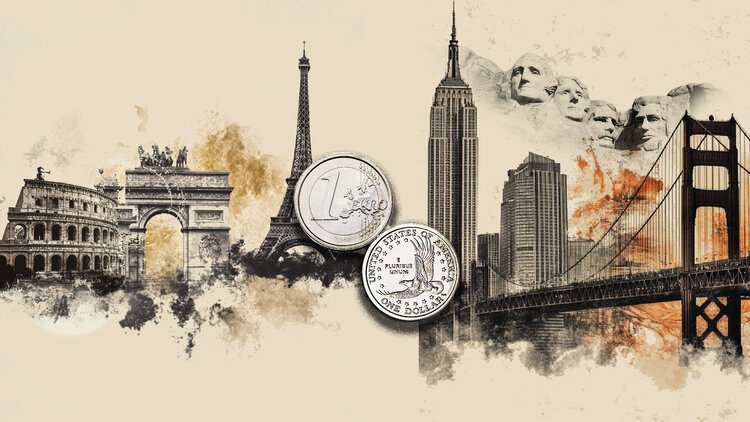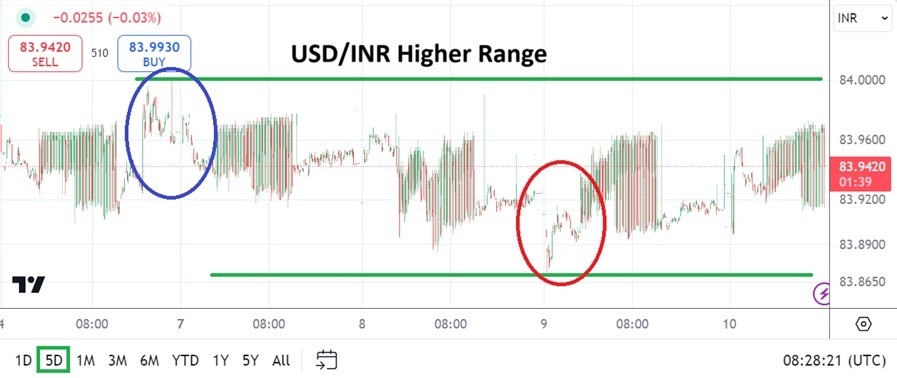There are days in FX when the market doesn’t need fireworks — just a whisper in the right key. Powell’s NABE speech landed like a velvet hammer: soft to the ear, nothing truly new, yet resonant enough to shake conviction. It was a sermon on “labor market fragility,” wrapped in calm cadence but heard by traders as an invitation to sell dollars. In a market starved of data, even the gentlest dovish echo can sound like a trumpet call. The dollar bears, who’d been gnawing on scraps for weeks, suddenly found themselves feasting at a full buffet.
The absence of fresh payrolls data left traders reading Powell like a haiku — every pause, every syllable weighed for hidden meaning. The message, once decoded, was clear enough: two rate cuts aren’t just a possibility, they’re the main course. And in FX land, that reminder reawakens an old seasonal instinct. The greenback has a bad habit of fading into year-end, when U.S. corporates throttle back on repatriation and global investors rotate into non-USD assets before the fiscal reset. Sovereign funds and European pensions lighten their dollar books to tidy benchmarks, creating a steady undercurrent of selling. Add in a Fed openly sketching out a dovish winter menu, and things could get a little jiggy. You can almost hear it already — the sleigh bells of December dollar selling jingling down the curve.
If you’ve followed my notes, you’ll know USD/JPY has been my personal punchbag of late — sold daily, not out of bravado but because the setup was asymmetric. Volatility was underpriced, the carry math made absolutely no sense, and the market’s reaction to Sanae Takaichi’s ascent was pure emotional overdrive. The subsequent rupture of a 26-year alliance in Tokyo’s political theatre only deepened the uncertainty — Japan’s favorite export besides electronics. Bureaucracy wrapped in ambiguity, polished with a bow of policy delay. In that climate, a lower USD/JPY wasn’t just a trade, it was destiny waiting for Powell’s soft nod to become manifest.
Now that he’s reminded the world that rate cuts are still on the menu, dollar-yen finally tastes like a dish cooked to perfection: a blend of policy misalignment, macro seasoning, and an escalating trade war simmering on the back burner. Each new tariff threat feels like a splash of chili oil in an already overcooked global stew. It’s not yet a full-blown fire, but it’s starting to smoke — and traders know how quickly those fumes can ignite when politics replaces policy as the main ingredient.
Across the Atlantic, the euro’s story feels more like a French tragedy performed in slow motion. I still see EUR/USD carving out the long arc toward 1.20 sometime next year, but we’re nowhere near ready to bet the house on it. France, as usual, is trying to balance the budget on the edge of a philosophical debate. Prime Minister Lecornu’s second act began with a flourish — suspending the pension reform to appease the Socialists, a gesture noble in spirit but disastrous in math. Every concession costs billions, and each billion adds another brick to France’s fiscal wall of worry.
The High Council of Public Finances has already called the plan “fragile” and “hypothetical” which, translated into trader language, means “good luck hedging that deficit.” Debt is set to rise toward 118% of GDP, while the promised deficit path reads like a bedtime story nobody believes. The irony is that political calm has returned, but only because everyone’s too tired to fight. For the euro, that’s a double-edged sword: less risk premium from Paris, but more structural decay at the heart of the continent.
Markets will tolerate a little French drama, but not a fiscal farce. If the government has to pass the budget by ordinance again, it’ll remind investors that Europe’s “stability” is often just the absence of alternatives. Meanwhile, the ECB will be forced to watch this budgetary improv from the sidelines, knowing full well that looser fiscal policy means tighter monetary vigilance down the road.
So, the euro climbs a wall of hope while France juggles spreadsheets and censure motions. The dollar, meanwhile, drifts lower on Powell’s lullaby. And USD/JPY — that once-ironclad carry darling — finally behaves like a currency again, not a vending machine for free yield.
In this market, where uncertainty wears the costume of calm, traders should remember that soft speeches can move hard money. Powell’s velvet hammer may have sounded benign, but it cracked the shell of dollar complacency. The question now is whether the bears can keep chewing, or whether they’ll once again find the table cleared before dessert.
The great debasement waltz: Gold’s encore at $4.185
Gold has finally breached the unthinkable, waltzing past $4,185 as if gravity had simply given up trying. This is not just another leg in the gold rally — it’s the full orchestral reprise of a theme that’s been building since the Fed first hinted it might trade its hawkish baton for a soft-landing lullaby. Two more rate cuts glint on the horizon, and the market has decided to front-run the encore. Gold doesn’t wait for the maestro to wave — it anticipates the gesture and moves before the sound hits the hall.
Traders know this melody: lower yields, rising geopolitical noise, and the unmistakable hum of fiscal excess. Each bar is familiar, yet this time the composition feels more unrestrained. US-China tensions have flared again, not over microchips or semiconductors, but over something as absurdly symbolic as cooking oil — a spat that perfectly captures the inflationary farce of modern trade warfare. Every time Washington and Beijing start another tariff dance, gold adds a few more notes to its symphony of distrust.
But this isn’t just geopolitical theatre. Beneath the surface, real yields are sinking, job market worries are rising, and the Fed has re-embraced its role as the market’s emergency therapist. The central bank no longer hides its dovish inclinations; it serenades them. When Powell even hints at cuts, gold hears an aria of debasement — a world where money becomes weightless and value must once again be anchored to something ancient, immutable, and shiny.
Silver, meanwhile, has been performing its own punk-rock version of the same theme — wild, unruly, and on the edge of chaos. After spiking above $53.50 in London, the market suffered a violent short-covering hangover as liquidity vanished faster than good collateral in a repo panic. The squeeze may be easing, but it’s left traders jittery, watching bid-ask spreads like a cardiogram. The London-New York price gap is narrowing, yet the message remains clear: the world’s silver cupboards are alarmingly bare.
And the anxiety doesn’t end there. The Section 232 probe into critical minerals — silver, platinum, palladium — hangs over the market like a sword. If Washington decides to weaponize these metals through tariffs, it would be like sanctioning oxygen in an industrial economy. Every refiner, every chipmaker, every EV plant would feel it. For traders, it’s an exquisite form of optionality: tail-risk insurance that pays in ounces.
This rally isn’t about yield-chasing or short-term speculation anymore. It’s about repricing trust. Central banks keep buying gold because they see what lies ahead — a slow-motion erosion of credibility, a softening of discipline, and a political economy addicted to fiscal sugar highs. ETFs follow that cue, retail demand shadows it, and even algorithmic flows now seem tuned to the “debasement trade.” The dollar has lost its invincibility aura; even with a slight edge lower today, it feels more like a currency performing on borrowed belief.
Call it what you like — a haven, a hedge, or a historical relapse — but gold has become the world’s mirror again. It reflects the unease behind every policy pivot, every trade tantrum, every fiscal binge disguised as stimulus. At $4,185, it’s no longer just reacting to fear — it’s embodying it. The metal is no longer the hedge against volatility; it is the volatility, a store of value rebelling against its own suppressors.
And as the lights dim on this act of monetary theater, one can’t help but feel we’re only halfway through the performance. Gold’s rise is not about euphoria — it’s about exhaustion. Exhaustion with paper promises, with political brinkmanship, with the illusion of control. The great debasement waltz continues, and while the dancers may change — Fed chairs, presidents, trade envoys — the music remains the same: when faith falters, gold sings.







